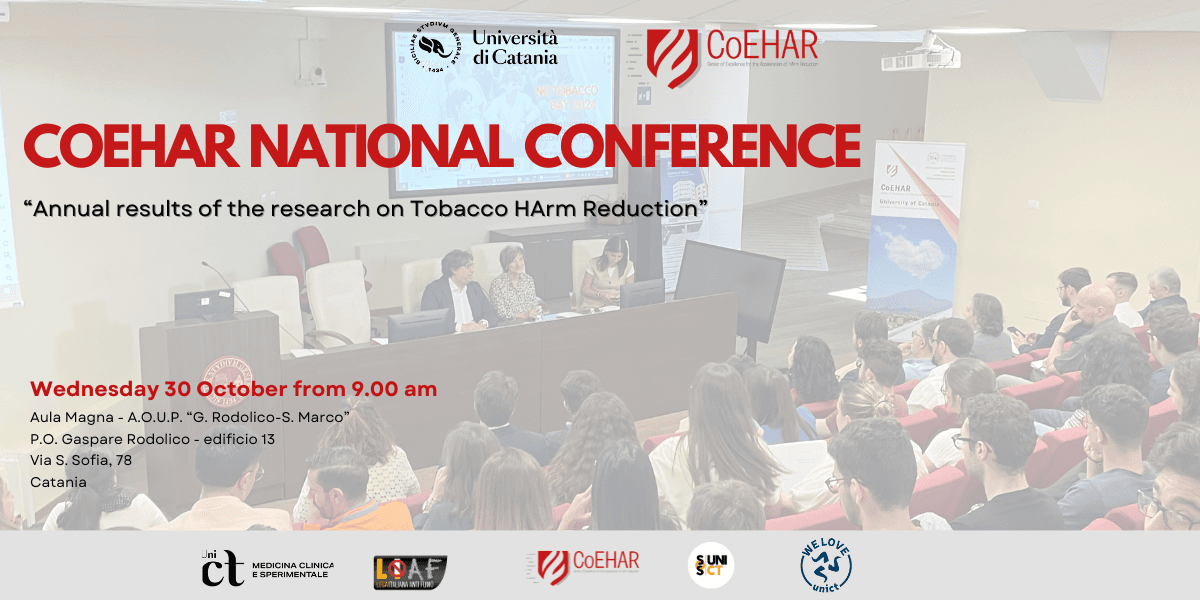Catania February, 2021 – The Director of CoEHAR Giovanni Li Volti presented at the meeting of the Society for Research on Nicotine & Tobacco (SRNT 2021) the study “The Role of cigarette smoke on ACE-2 protein-membrane expression in bronchial epithelial cells using an air-liquid interface model.”
The study aims to evaluate the effect of cigarette smoking on the expression of the ACE-2 protein in bronchial epithelial cells.
The hypothesis is that nicotine can regulate the viral expression of the coronavirus. The result of this study may provide new insights into the role of ACE-2 in the complex pathophysiology of cardiovascular and lung diseases in smokers.

The research – presented during the panel entitled: “Multisystemic impact of nicotine exposure: Covid and Beyond” aims to understand the expression of ACE2 to demonstrate if there is a dangerous liaison between smokers and Sars-Cov – 2 or just a random correlation.
The SRNT is a professional association dedicated to supporting researchers and professionals who work in different fields of research on tobacco and nicotine.
THE RESEARCH

To achieve the best results, CoEHAR researchers used the “smoking machine”, a highly innovative tool that allows perfect imitation of what occurs inside the smoker’s respiratory tract during the act of smoking. Under normal conditions, this machine reads real exposure conditions within minutes.
The CoEHAR analysis (among the first in this field) has shown the non-correlation between the reduction of the expression of ACE 2, the protein through which the Covid-19 virus enters the human body, and the inflammatory response.
During his speech, Professor Li Volti also answered some specific questions about the penetration capacity of the SARS-COV-2 virus inside cells:
“One of the big barriers of the literature data is that the smoking habits of the courts studied doesn’t explain the discrepant data between clinical trials and in vitro data. There is an increasingly urgent need to reproduce the real habits of smokers. Our studies will be based in the future on acute exposures to understand the role of nicotine in this process “.
Standardizing the methodologies means giving a further boost to the sector of new technologies applied to Harm Reduction. The aim of the Coehar research is to offer a 360-degree view of smoking addiction and the challenges that THR researchers are committed to addressing, providing new options to those who are trying to quit smoking for good.
We remember that during last edition SRNT, CoEHAR presented two different studies:
- “Role of smoke on ACE-2 membrane protein expression in bronchial epithelial cells” – (Li Volti) Video presentation
- “Medium-Long time storage condition of Cambridge filter pads CFPS for nicotine dosimetry” – (Zuccarello) (Download POSTER) and read more.





